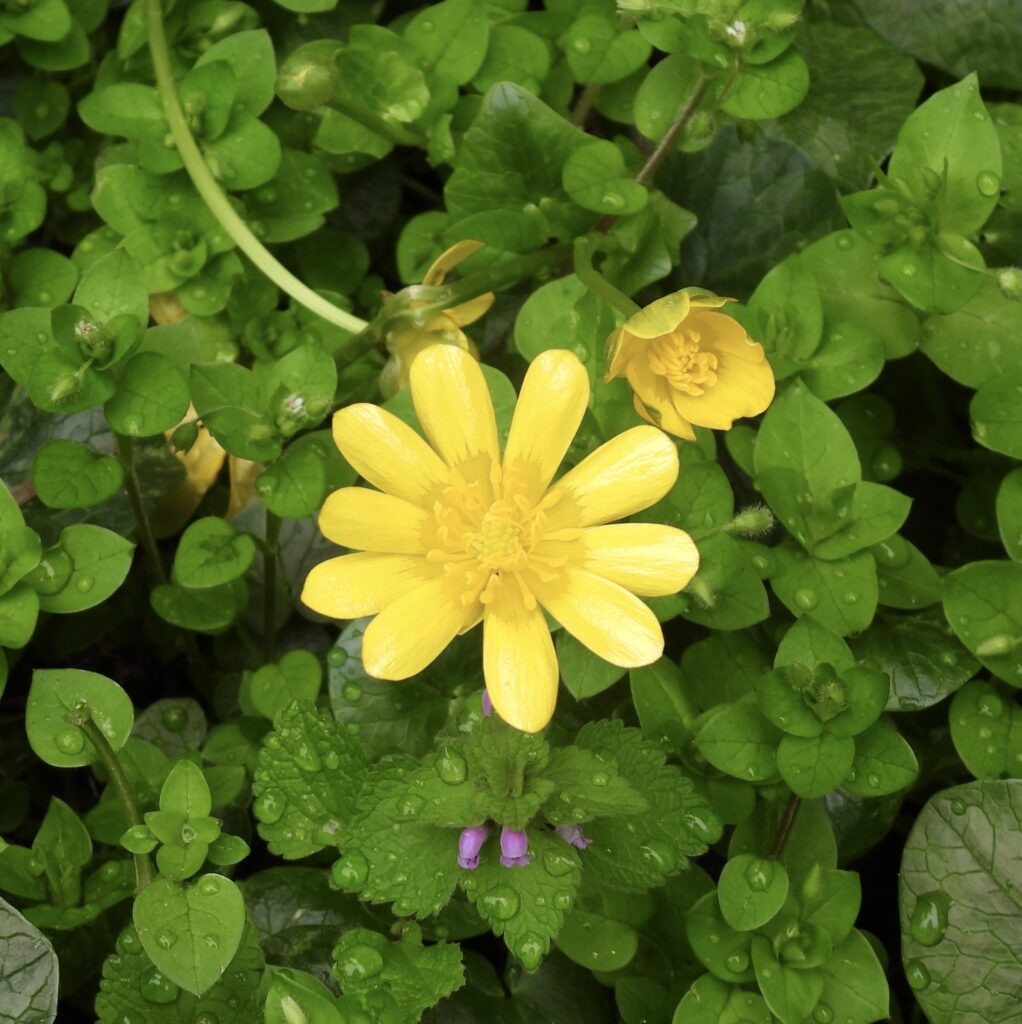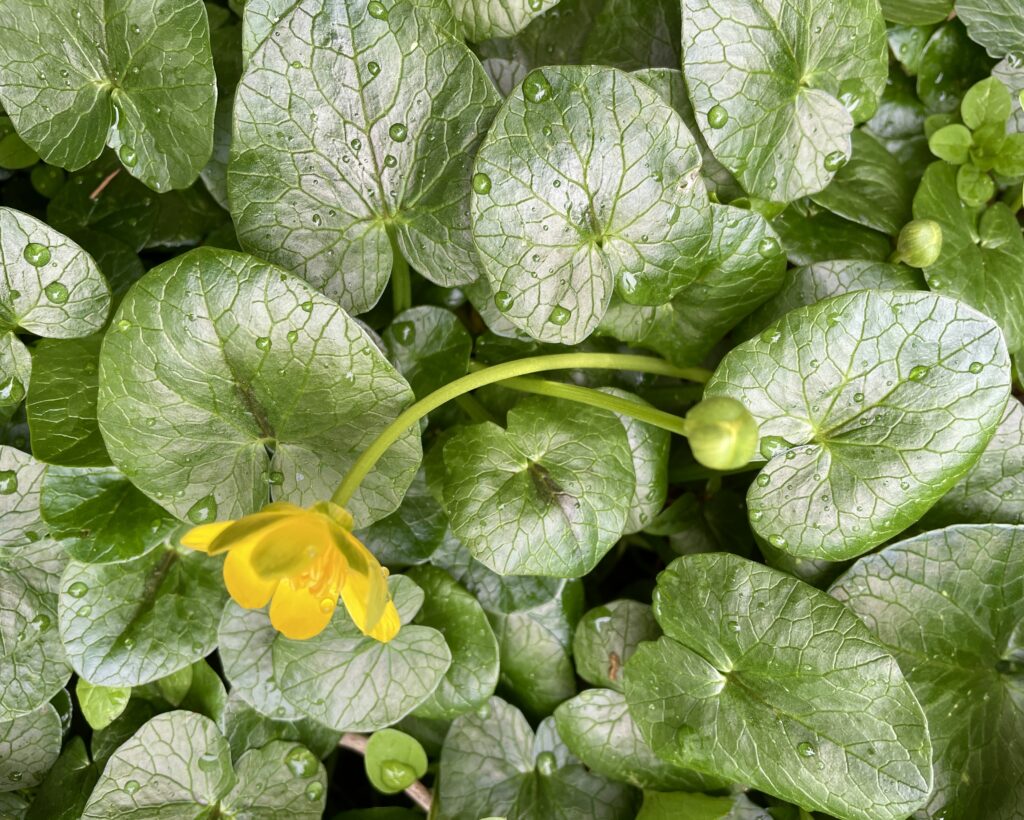
By Mary Reid Barrow
I have a real love-hate relationship with the remnants of the lesser celandine in my yard.
On the one hand, its sweet yellow blooms in the photo above are like early season, bright lights among the chickweed and spent stems at the far end of my little garden. I can’t help but smile when I see them…for a moment.
On the other hand, I quickly start thinking that any other early bloomer trying to grow is in danger of being smothered by this dog-gone, invasive imposter of a plant!
Many years ago, lesser celandine was touted by older gardeners here as a rare Virginia native, a low growing yellow spring beauty, known as marsh marigold. It got a nice free ride in these parts for a long time.
Some of it was lovingly given to me by a friend when I first moved to my house several decades ago, but it didn’t take long before the lesser celandine became a friend, a clingy friend you wish would go away, reaching out further and further in the garden each year. Soon I was scrambling to keep it under control.
When native plants became top on our minds in Virginia Beach, I learned that lesser celandine (Ranunculus ficaria), is a native of Asia, definitely not a marsh marigold. According to the Digital Atlas of the Virginia Flora, marsh marigold (Caltha palustris) grows in wet areas and mainly in the mountains of Virginia. It is not seen often in the middle and coastal areas of the state.
Marsh marigold has five or six pretty yellow petals, while lesser celandine has twice that many pretty petals. Marsh marigold has more or less kidney-shaped leaves, while our imposter has more heart-shaped leaves.

Both are members of the buttercup family, but there the resemblance ends. Lesser Celandine’s beauty is only skin deep. Those heart-shaped leaves and pretty blooms have no heartfelt sympathy for any plant or anyone. It grows in a dense, thick mat and tolerate varied conditions, including in forests, wetlands, and my garden and have no insect enemies to keep them in check.
Lesser celandine is easy to pull up, something I try to do early every spring. And eac spring, it very obligingly and quickly does a disappearing act all its own. Unfortunately, out of sight and out of mind, some tubers always seem to remain, lurking beneath the soil to come back in full flower and leaf the next spring, challenging my emotions once again.
LRNow would love to hear your nature news. Whether it’s about unusual plants or critters you see on your walks or find on the beach, or tales of good folks who care for the environment, let maryreid@lrnow.org.